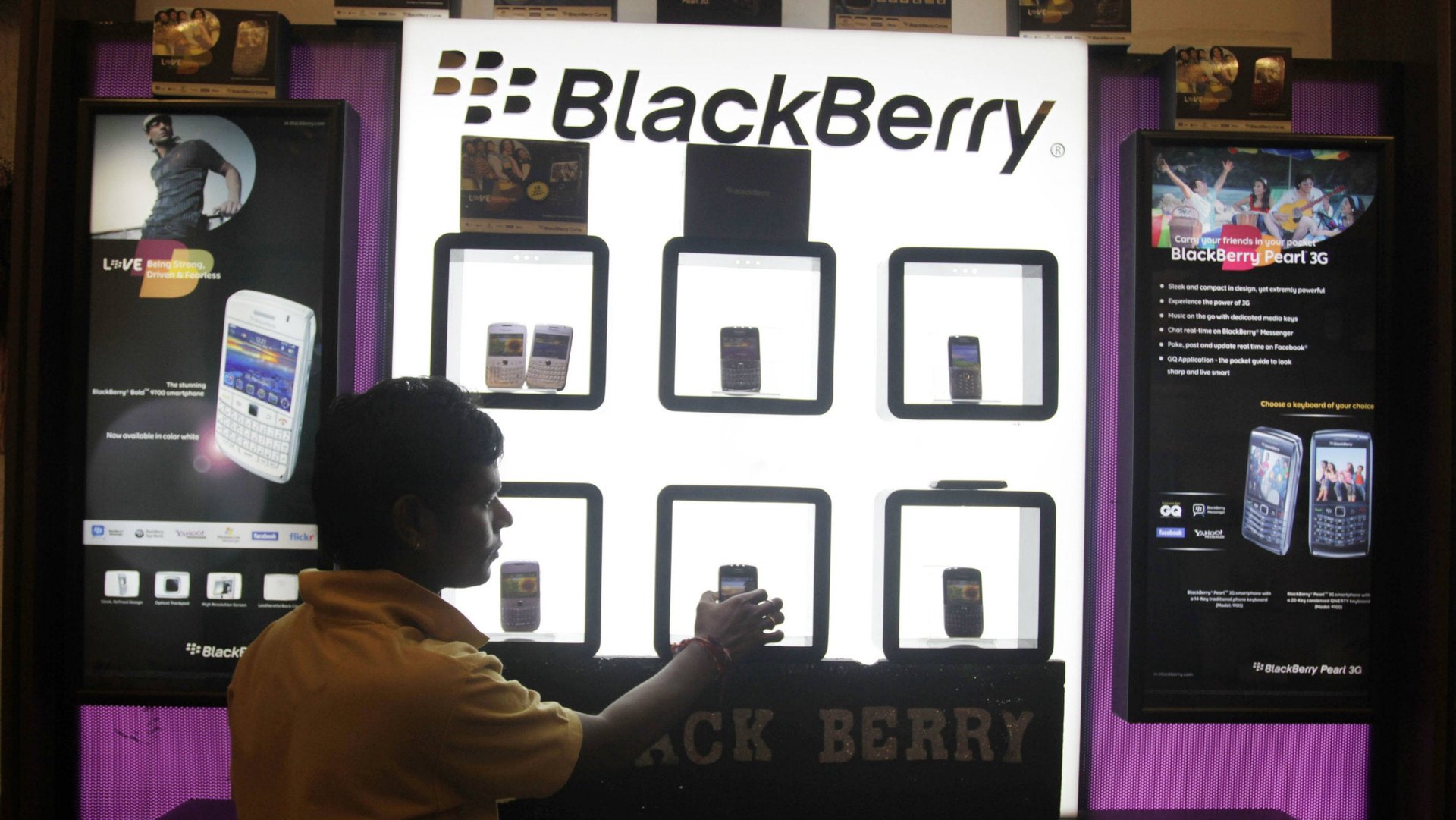The choice in India’s mobile market: A $2 Samsung sticker or an $800 BlackBerry 10
There’s no better place than Palika Bazaar, a maze of hundreds of shops in central New Delhi, to get the pulse on India’s mobile market. Quartz ventured here the day after BlackBerry announced its pricing plan on its new Z10 for this key emerging market: a gasp-inducing 43,490 rupees ($804).


There’s no better place than Palika Bazaar, a maze of hundreds of shops in central New Delhi, to get the pulse on India’s mobile market. Quartz ventured here the day after BlackBerry announced its pricing plan on its new Z10 for this key emerging market: a gasp-inducing 43,490 rupees ($804).
That’s more than a cheap motorbike, more than most people’s monthly mortgage, and more than a mobile shop’s monthly rent. And based on shopkeeper’s conversations with customers—many of them first-time smartphone buyers—BlackBerry’s days here seem numbered.
At Electronic Avenue, the salesman named Khan went through the motions with a customer. “No, it doesn’t have many games. No, it doesn’t have Instagram. No, it doesn’t have Whatsapp. Don’t waste time, Madam, let me show you the iPhone,” he says. “The only reason to use it is if your company buys it for you.”
Indeed, BlackBerry counts on two kinds of customers in India – corporate users and fans of BlackBerry Messenger, better known as BBM. Although the brand is still a strong choice among purchasing managers, more workplaces are allowing workers to access company mail through other phones, as part of the Bring Your Own Device movement.
In the last three years, BlackBerry has found success with lower priced models coveted by college students and young executives who loved the BBM service; it was a way to message their friends without worrying about paying carrier costs for each message. Then along came the popular messaging app, Whatsapp, completely stripping BBM of its unique proposition. BlackBerry’s market share in India last year fell from 18% to 12.4 %. The newest offering doesn’t seem to be doing much to reverse that fortune.
Even though smartphones are only about 10% of the mobile phone market in India, they are the fastest growing device category. According to International Data Corp., 19 million smart phones were sold in India last year. This number is expected to grow to 108 million by 2016. Android is the most popular smartphone operating system here. Samsung, which has dozens of Android models priced between $100 and $750, boasts about 46% of the market. Other international brands like HTC and Motorola are also popular, along with indigenous players like Micromax, Lava and Spice.
With BlackBerry’s Feb. 25 announcement, the Z10 became the second most expensive phone in the country, its price tag a tad lower than the iPhone. Unlike other markets, India’s mobile operators do not subsidize the price of the device. Recognizing this, even Apple, which has begun flirting with the Indian consumer only recently, launched the iPhone 5 with a monthly payment plan similar to financing for refrigerators and washing machines. Blackberry Z10 does not have this payment option—and it’s priced higher than the best-selling Android phones in India.
And so at Palika Bazaar, an underground market in the geographic and metaphorical sense of the word (Samsung stickers can be applied over other labels for $2), excitement about the BlackBerry Z10 remains muted. “If you are a frequent user of e-mail, I’ll recommend that you buy a BlackBerry,” says Ravi Kumar Shukla, manager of Mobile Hut, “any BlackBerry, that is, except the Z10. For that price, you get no benefits.”